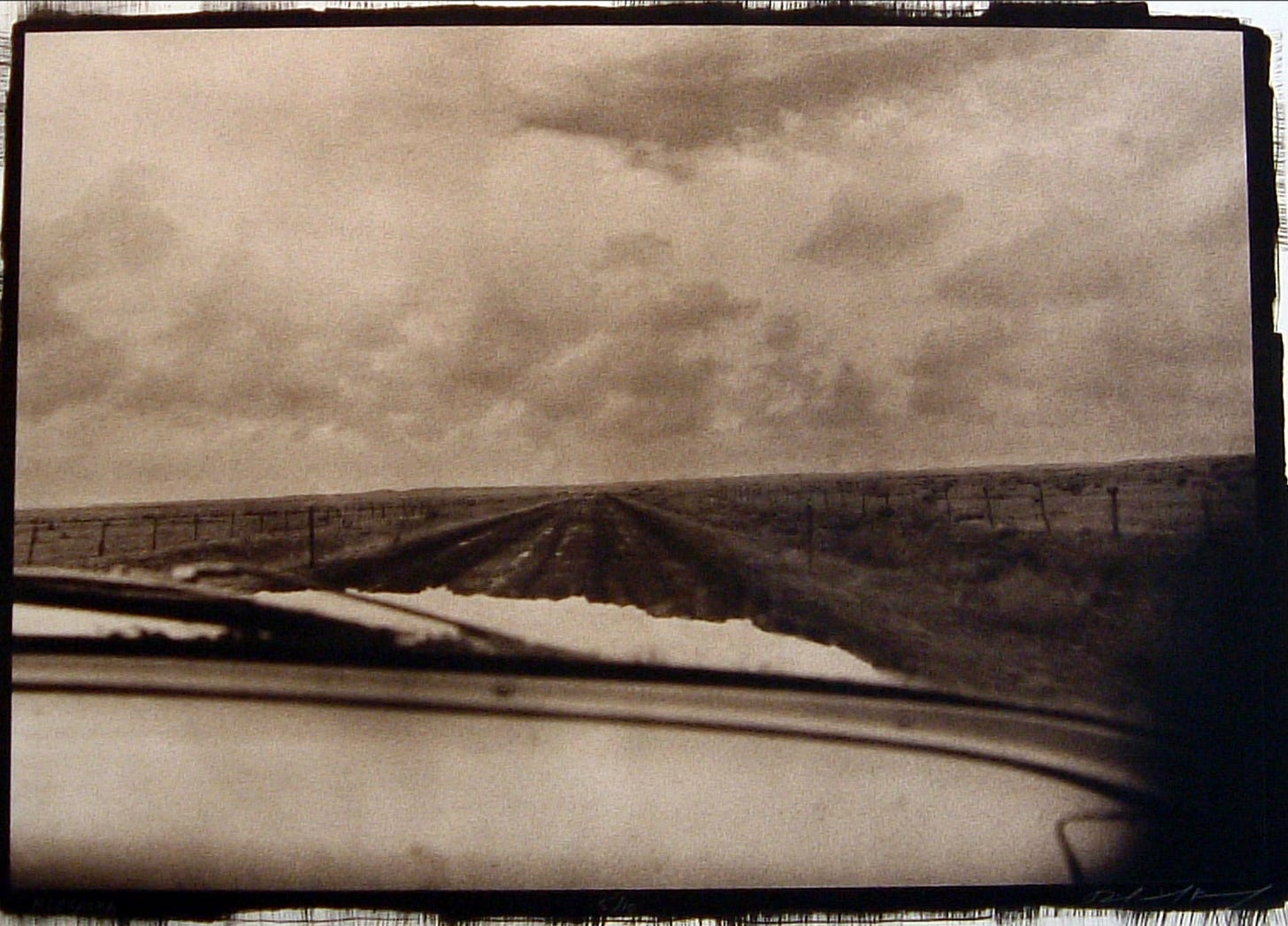The cover art of Brice Springsteen’s Nebraska (below) matches the gloomy brooding music inside. David Michael Kennedy’s image is black and white, grainy and cold. Snow covers the hood of the car, and for all we know the windshield wipers may not work. The framing is imperfect, just like the music itself, recorded on a four track cassette recorder, and initially intended as a demo only.
Photographer Kennedy recalls taking the 1975 cover shot Springsteen selected:
“The cover shot was taken from the window of an old pick-up truck in the dead of winter. I was on a road trip, and my girlfriends brother was driving. We were in a super great snow storm and within minutes of this shot the storm hit hard and we were in total white out for hours. I thought that image might be my last! ”
Creative imitation arises from despair
A few years ago I took a winter trip on similar roads through-out the Mid-West. Stepping out to shoot photos in the cold chilled me to the bone. I’ve included the images taken in the video at the top. Some of the scenes in another video I crafted imitate images from the record too. It was bleak out there, but unlike Springsteen I wasn’t suffering from depression and allowed some colour sneak into my shots.
Of that period Springsteen said: “I just hit some sort of personal wall that wasn’t there. It was my first real major depression, where I realised I’ve got to do something about it.”
The album itself is an attempt to understand why Springsteen’s success had left him feeling so alienated: “Suddenly I looked around and said where is everything, where is my home, where is my partner, where are the sons or daughters I thought I might have some day and I realised non of those things were there.”
Themes in the songs reflect the adult Springsteen confronting the confusion left behind from his childhood. A child’s point of view (Mansion on the Hill, My Father’s House, Used Cars) meets an alienated adult’s (Nebraska, Highway Patrolman, Johnny 99, State Trooper).
In keeping with the ‘art imitating life’ motif the album’s title track was inspired by Badlands, a film part-based on a true story of the Nebraskan serial killer Charles Starkweather, who went on a killing spree with his girlfriend, murdering eleven people in the Great Plains between 1957 and '58. “They want to know why I did what I did,” asks the killer in the song. “Well I guess it’s just the meanness in this world,” he replies to himself.
Despite this despair Nebraska is the one album Springsteen would choose to represent his body of work. In the end he found a Reason To Believe, and one creative act went on to inspire countless others, including my own.
References:
CBS Sunday Morning. (2024, July 21). Bruce Springsteen on the soulful voice behind “Nebraska” [Video]. YouTube.
David Michael Kennedy: Bruce Springsteen, Nebraska album cover photograph - Snap Galleries Limited. (2023, July 18). Snap Galleries Limited. https://www.snapgalleries.com/product/david-michael-kennedy-bruce-springsteen-nebraska-album-cover-photograph/#
Wikipedia contributors. (2024, July 15). Badlands (film). Wikipedia. https://en.wikipedia.org/wiki/Badlands_(film)










Springsteen's Nebraska